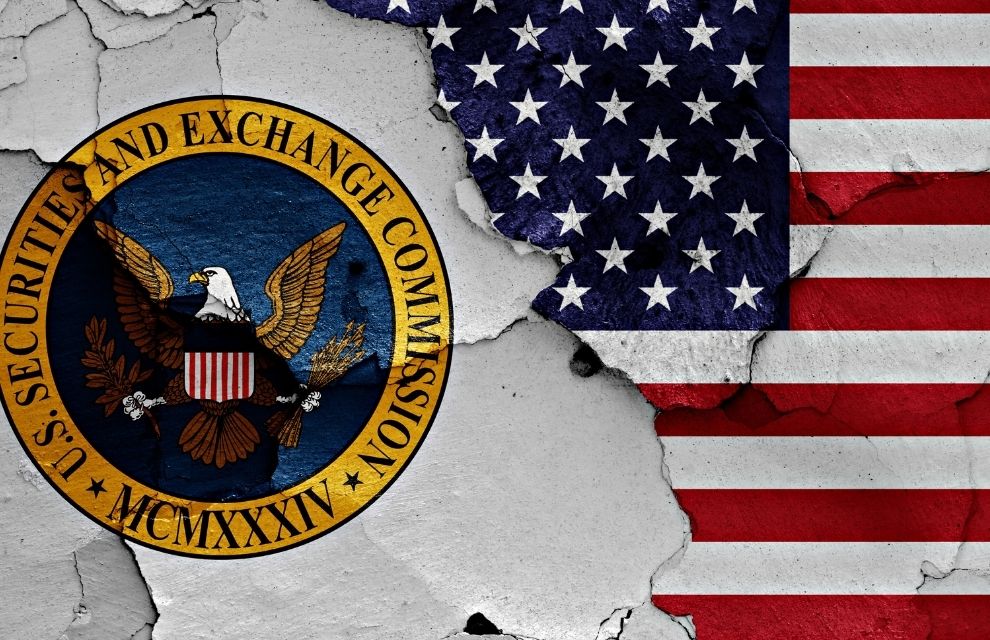SEC targets better visibility into activities of large short sellers
28 February 2022 US
 Image: AdobeStock/daniel0
Image: AdobeStock/daniel0
The US securities markets regulator has voted for changes designed to deliver greater transparency to short selling activities, and particularly the actions of large short sellers.
This new reporting requirement will oblige institutional asset managers to report short sales-related data to the Securities and Exchange Commission (SEC) on a monthly basis.
The SEC will then publish aggregated data relating to large short positions, including daily short selling activity, for each individual security.
These provisions, published under New Exchange Act Rule 13f-2, will generate data on short sales activity that will complement short sales data currently available from FINRA and the stock exchanges.
The SEC also voted to put forward a new provision under Regulation SHO Rule 205 that will create a “buy to cover” order marking obligation from broker-dealers.
Broker-dealers will be required to mark an order as “buy-to-cover” if they have short interest in the same security at the time the trade is entered.
Regulation SHO currently requires broker-dealers to mark their sale orders as “long”, “short” or “short exempt”, but does not have an equivalent requirement for buy orders.
In parallel with this development, the SEC voted to amend the national market system (NMS) plan, requiring that firms report “buy to cover” information to the consolidated audit trail (CAT), the consolidated trade data repository for NMS securities markets.
The SEC proposes that the new provision will reinforce its ability to identify potentially abusive trading practices, including short squeezes, and to reconstruct significant market events.
Commenting on the proposal, SEC Chair Gary Gensler says: “Proposed Rule 13f-2 would make aggregate data about large short positions available to the public for individual equity securities. This would provide the public and market participants with more visibility into the behaviour of large short sellers.
“The raw data reported to the Commission on a new Form SHO would help us to better oversee the markets and understand the role short selling may play in market events. It’s important for the public and the Commission to know more about this important market event, especially in times of stress or volatility.”
In announcing this information, the SEC also indicated that it will reopen consultation for its Exchange Act Rule 10c-1 proposal which, if implemented, will extend trade reporting obligations for US securities lending transactions and loan availability.
This new reporting requirement will oblige institutional asset managers to report short sales-related data to the Securities and Exchange Commission (SEC) on a monthly basis.
The SEC will then publish aggregated data relating to large short positions, including daily short selling activity, for each individual security.
These provisions, published under New Exchange Act Rule 13f-2, will generate data on short sales activity that will complement short sales data currently available from FINRA and the stock exchanges.
The SEC also voted to put forward a new provision under Regulation SHO Rule 205 that will create a “buy to cover” order marking obligation from broker-dealers.
Broker-dealers will be required to mark an order as “buy-to-cover” if they have short interest in the same security at the time the trade is entered.
Regulation SHO currently requires broker-dealers to mark their sale orders as “long”, “short” or “short exempt”, but does not have an equivalent requirement for buy orders.
In parallel with this development, the SEC voted to amend the national market system (NMS) plan, requiring that firms report “buy to cover” information to the consolidated audit trail (CAT), the consolidated trade data repository for NMS securities markets.
The SEC proposes that the new provision will reinforce its ability to identify potentially abusive trading practices, including short squeezes, and to reconstruct significant market events.
Commenting on the proposal, SEC Chair Gary Gensler says: “Proposed Rule 13f-2 would make aggregate data about large short positions available to the public for individual equity securities. This would provide the public and market participants with more visibility into the behaviour of large short sellers.
“The raw data reported to the Commission on a new Form SHO would help us to better oversee the markets and understand the role short selling may play in market events. It’s important for the public and the Commission to know more about this important market event, especially in times of stress or volatility.”
In announcing this information, the SEC also indicated that it will reopen consultation for its Exchange Act Rule 10c-1 proposal which, if implemented, will extend trade reporting obligations for US securities lending transactions and loan availability.
← Previous regulation article
SEC 10c-1 trade reporting update: comment period extends until 1 April
SEC 10c-1 trade reporting update: comment period extends until 1 April
NO FEE, NO RISK
100% ON RETURNS If you invest in only one securities finance news source this year, make sure it is your free subscription to Securities Finance Times
100% ON RETURNS If you invest in only one securities finance news source this year, make sure it is your free subscription to Securities Finance Times



